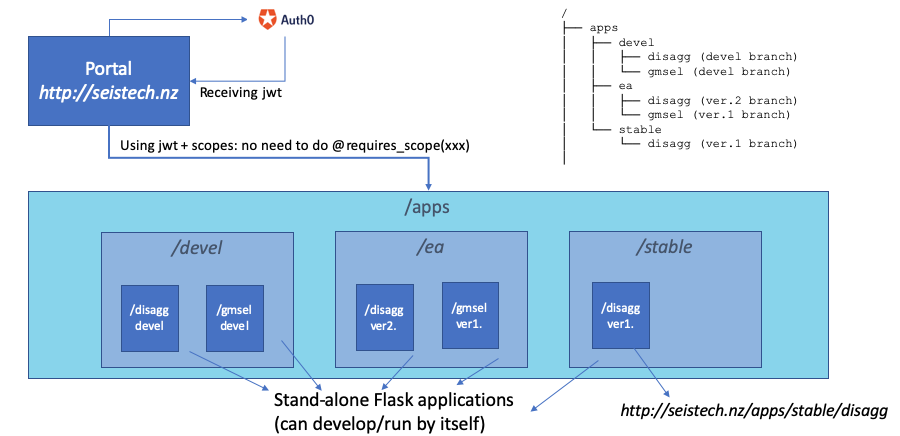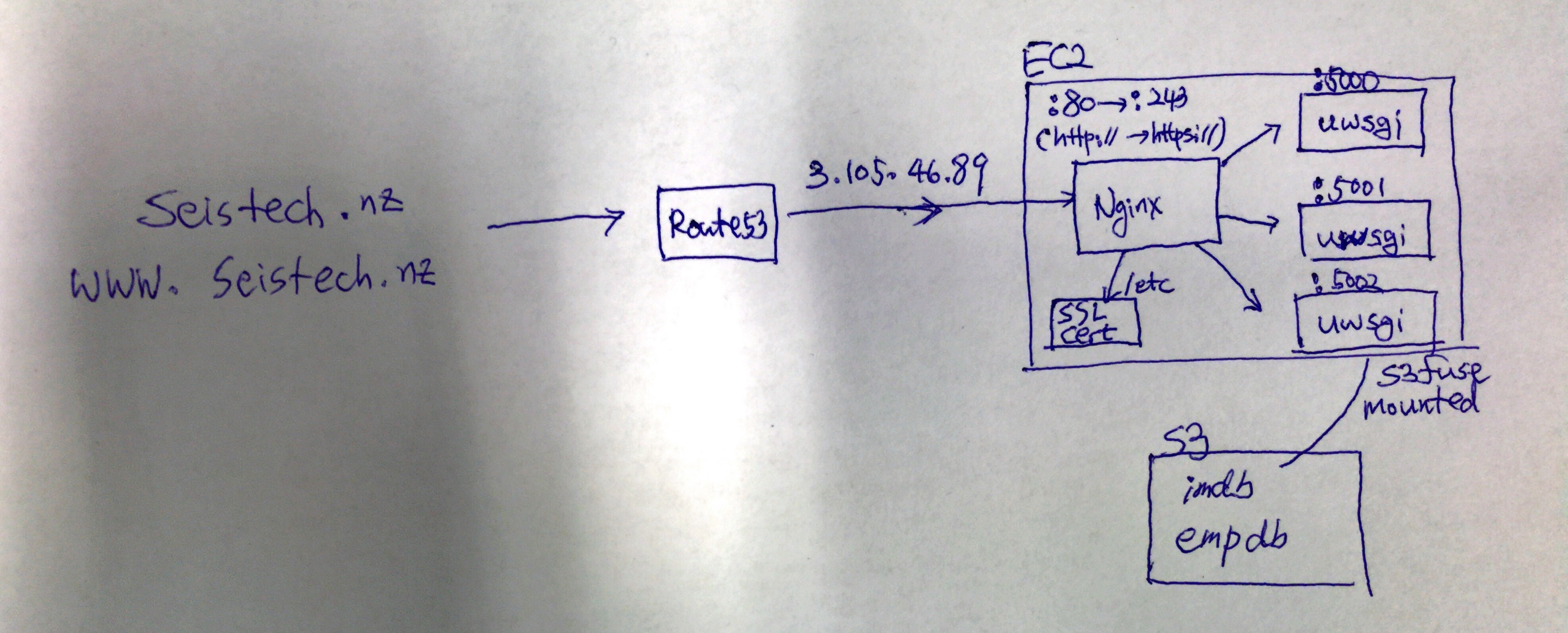...
-----------
Overall architecture
Server layout
| Info |
|---|
The flask web service is started by the following uwsgi command. (py3env) [ec2-user@ip-172-31-2-230 seisfinder2]$ cat webservice-ec2.sh This creates a socket /run/seistech.sock, and Nginx monitors this socket file to route the traffic from port 5000 to port 443. See the line marked with ( *) below from Nginx configuration. /etc/nginx/nginx.conf ... server {
listen 80;
server_name seistech.nz www.seistech.nz;
return 301 <https://seistech.nz$request_uri;>
}
server {
listen 80;
server_name eap.seistech.nz;
return 301 <https://eap.seistech.nz$request_uri;>
}
# Settings for a TLS enabled server.
server {
listen 443 ssl http2 default_server;
listen [::]:443 ssl http2 default_server;
server_name seistech.nz,www.seistech.nz;
root /usr/share/nginx/html;
ssl_certificate "/etc/letsencrypt/archive/seistech.nz/fullchain1.pem";
ssl_certificate_key "/etc/letsencrypt/archive/seistech.nz/privkey1.pem";
ssl_session_cache shared:SSL:1m;
ssl_session_timeout 10m;
ssl_ciphers HIGH:!aNULL:!MD5;
ssl_prefer_serve
# Load configuration files for the default server block.r_ciphers on;
include /etc/nginx/default.d/*.conf;
location / {
rewrite /(.+) /$1 break;
include uwsgi_params;
uwsgi_pass unix:/run/seistech.sock; ----------------- (*)
}
}
server {
listen 443 ssl http2 ;
listen [::]:443 ssl http2 ;
server_name eap.seistech.nz;
root /usr/share/nginx/html;
ssl_certificate "/etc/letsencrypt/archive/seistech.nz/fullchain1.pem";
ssl_certificate_key "/etc/letsencrypt/archive/seistech.nz/privkey1.pem";
ssl_session_cache shared:SSL:1m;
ssl_session_timeout 10m;
ssl_ciphers HIGH:!aNULL:!MD5;
ssl_prefer_server_ciphers on;
include /etc/nginx/default.d/*.conf;
location / {
rewrite /(.+) /$1 break;
include uwsgi_params;
uwsgi_pass unix:/run/seistech_5001.sock;
}
}
|
...
Questions
Do we charge for each IM for the same location? (ie. different order for an IM?) |
Initially we focus on "products" - disaggregation and gm selection. Where user can freely play with various parameters without extra charge once purchased | |
Bulk order discount? If user wants all IMs? Do we set maximum threshold that gives everything? |
Monetisation scheme will be further explored later. | |
If a user-specified location is snapped to one location that matches an existing project : Should we merge this project to the existing one? (free of charge?) |
We charge again. Each project is linked to user-specified location (not snapped one, without detailed info of snapped one omitted). |
ER Diagram
Next Steps
- Reach an agreement on the architecture design
- Identify modules and separate them
- Determine input and output interface and document : Follow comment standards
- Implement DB and basic skeleton
...


